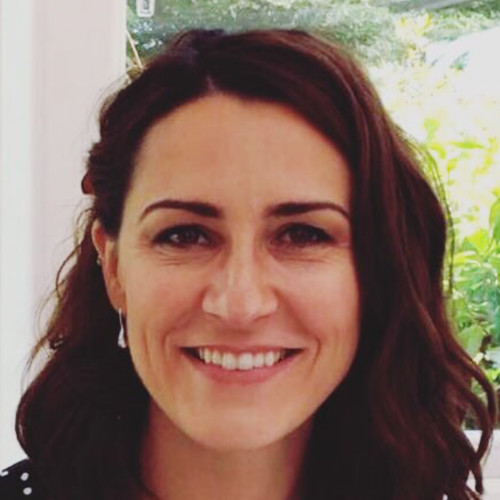
Early Glycan Screening: A Critical Step for High-Quality Biologics Development
In biopharmaceutical production, particularly in the development of therapeutic antibodies, glycosylation is a crucial determinant of product efficacy, stability, and safety. As glycan structures greatly impact critical quality attributes (CQAs) such as immunogenicity, pharmacokinetics, and antibody-dependent cellular cytotoxicity, understanding and controlling glycosylation patterns from early stages of development is paramount.
Industry experts Sebastian Giehring, CEO of PAIA Biotech, and Andrea Gough, Senior Director of the Solentim Portfolio at Advanced Instruments, recently highlighted this topic in an in-depth webinar. Their insights, reinforced by multiple real-world applications, illustrate how early glycan screening can support data-driven decision-making in modern cell line development (CLD).
Understanding the Importance of Glycosylation as a Critical Quality Attribute
Glycosylation—the attachment of carbohydrate chains (glycans) to proteins—is an essential post-translational modification significantly impacting biological function. Glycans influence therapeutic proteins by affecting their pharmacokinetics, potency, immunogenicity, and overall therapeutic performance. Regulatory agencies categorize glycosylation patterns as critical quality attributes (CQAs), requiring rigorous monitoring and control during therapeutic development.
As Sebastian Giehring noted, glycosylation in monoclonal antibodies (mAbs) primarily occurs at the Fc region, typically presenting limited glycoform diversity. However, other protein modalities, such as Fc-fusion proteins, exhibit increased complexity with higher branched glycans, affecting therapeutic properties significantly.1 Therefore, precise early-stage glycan profiling is essential for aligning therapeutic quality and clinical outcomes.
Addressing Common Challenges in Glycan Analysis
Traditional glycan analysis methods frequently entail cumbersome sample handling, low throughput, and significant time delays. These challenges have historically slowed decision-making during CLD, impacting timelines and costs.
Andrea Gough explained how recent advancements, particularly through the partnership between Advanced Instruments and PAIA Biotech, have addressed these bottlenecks. By combining Solentim’s ICON™ platform and PAIA’s glycan assay technology, researchers can perform rapid, semi-quantitative glycan screenings at the earliest stages of CLD, driving efficiency and accuracy.1
Real-World Impact: Insights from Industry Leaders
The webinar presented real-world case studies demonstrating how early glycan data and integrated workflows support improved CLD decision-making:
- Bristol-Myers Squibb employed PAIA glycan assays to optimize sialylation in Fc-fusion proteins. Their internal comparison of the assay with HILIC yielded strong correlation (r² = 0.95), and the team successfully applied the assay to crude and purified samples.
- Probiogen used the PAIA assay to screen afucosylation levels as part of a glycoengineering platform validation, highlighting a robust correlation between lectin binding and conventional analytics.
- Florabio participated in a comparative study evaluating glycan profiles using both PAIA glycan assays and mass spectrometry. Their results showed consistent trends in glycan composition—such as decreasing mannose and increasing galactosylation across different culture conditions—validating the PAIA assay’s ability to reliably reflect glycan shifts during media optimization.
- Merck used early glycan data during the shake flask stage to demonstrate that glycosylation profiles (such as mannose, sialic acid, and fucose) remained consistent across scale-up stages. 2 This underlined the importance of early glycan insights in process development, although PAIA assays were not used in this study.
These examples highlight the value of early screening and multi-parametric data integration to guide clone selection and optimize therapeutic product quality.
A Synergistic Solution: The Solentim ICON and PAIA Glycan Assay
Integrating the Solentim ICON™ with PAIA glycan assays provides bioprocess scientists with actionable data early in the CLD workflow.
As Sebastian Giehring explained, “The combination of ICON and PAIA technologies enables semi-quantitative, multi-glycan screening from minimal sample volumes, allowing scientists to confidently rank and triage clones at the earliest stages of development”.
This integrated approach offers several notable advantages:
- Minimal Sample Volumes: Only micro-scale amounts are required, enabling glycan screening at early CLD stages.
- Multi-Biologic Compatibility: Suitable for various biologics, including complex glycoproteins and Fc-fusion proteins.
- Minimal Handling and High Throughput: Automation-friendly, bead-based assays facilitate high-throughput screening with simplified workflows.
- Predictive Insights: When integrated into a broader workflow, glycan screening helps prioritize candidate clones that meet predefined quality benchmarks.
Enhancing Decision-Making and Workflow Efficiency
The Solentim Ecosystem—featuring VIPS® PRO for seeding, Cell Metric® X for growth monitoring, and ICON™ for glycan and titre screening—supports informed decisions across multiple workflow stages. When combined with STUDIUS™ software, teams can visualize, track, and document clone data and progression in a centralized digital environment.
According to Andrea Gough, “Early glycan screening capability embedded in our ICON platform transforms cell line development by empowering scientists to make informed, accurate decisions earlier in the CLD workflow. This not only enhances productivity but ensures therapeutic quality from the outset” .
The Broader Impact of Glycan Profiling
As literature confirms3,4,5, glycosylation critically affects product attributes such as stability, immunogenicity, and therapeutic efficacy, thus reinforcing its centrality to biologics development. Monitoring glycosylation early can help identify undesirable glycoforms, enabling earlier triage of less promising clones, reducing wasted resources, and contributing to higher downstream success rates.
Conclusion
Incorporating automated, high-throughput glycan profiling into cell line development is not merely an innovation—it is a strategic enhancement to continue driving efficiencies in drug development. The Solentim and PAIA glycan assay integration exemplifies a major advancement, offering bioprocess scientists critical data to enhance decision-making, reduce timelines, and ensure consistent biologic quality.
To learn more, please view the full webinar here – Early Glycan Screening: Key to High-Quality Biologics Development
About the Experts

Andrea Gough, Senior Director of the Solentim Portfolio at Advanced Instruments
Andrea Gough is the Senior Director for the Solentim Portfolio at Advanced Instruments. With a first-class bachelor’s degree in applied Biochemistry and Molecular Cell Biology from the University of the West of England, Andrea has over 15 years of experience in biologic drug development, specializing in cell line development (CLD). She began her career as a Field Application Scientist at Molecular Devices, supporting customers with CLD challenges and automation implementation.
Andrea has since held global product management roles at Thermo Fisher Scientific, Solentim, and Horizon Discovery. At Advanced Instruments, she progressed from Senior Business Development Manager to Senior Director, focusing on enhancing CLD efficiencies through the AI Solentim portfolio.

Sebastian Giehring earned his PhD in Analytical Chemistry from the University of Hamburg in 1999. He subsequently worked in a scientific role at a spectrometry company before transitioning to a venture capital firm as an investment manager for life sciences.
In 2006, he chose to pursue the startup sector, taking on various management roles in life science tool companies. In 2014, he invented the PAIA microplate technology and founded PAIA Biotech GmbH, where he has served as CEO ever since.
References:
- Giehring, S., Gough, A. (2025). Early Glycan Screening – Key to High Quality Biologics Development [Webinar]. Advanced Instruments & PAIA Biotech.
- Rouiller, Y., Bielser, J.-M., Brühlmann, D., Jordan, M., Broly, H., & Stettler, M. (2016). Screening and assessment of performance and molecule quality attributes of industrial cell lines across different fed-batch systems. Biotechnology Progress, 32(1), 132–143
- Mimura, Y., Church, S., & Jefferis, R. (2015). The glycosylation of human IgG-Fc: Relevance to clinical monoclonal antibodies. The Journal of Immunology, 202(5), 1582–1594. https://doi.org/10.4049/
jimmunol.1901144 - Kaneko, Y., Nimmerjahn, F., & Ravetch, J. V. (2006). Fc sialylation prolongs serum half-life of therapeutic antibodies. The Journal of Immunology, 202(5), 1582–1594. https://doi.org/10.4049/
jimmunol.176.6.3768 - Zheng, K., Bantog, C., & Bayer, R. (2012). The impact of glycosylation on the pharmacokinetics of monoclonal antibodies. Pharmaceutical Research, 29(7), 1954–1964. https://doi.org/10.1007/
s11095-012-0921-3